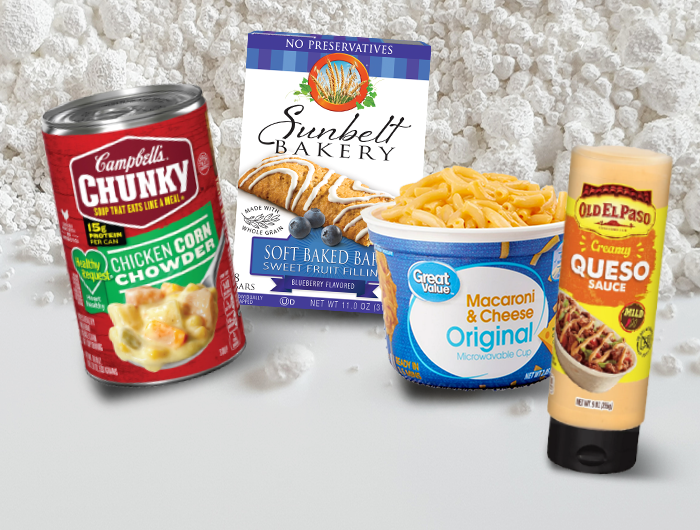Watchdog group to consumers: Avoid titanium dioxide

Titanium dioxide nanoparticles may accumulate and cause DNA damage
It adds a bright white color to coffee creamers, baked goods, chewing gums, hard-shell candies, puddings, frostings, dressings, and sauces. But the nanoparticles found in “food-grade” titanium dioxide may accumulate in the body and cause DNA damage—which is one way chemicals cause cancer and other health problems.
For that reason, the Center for Science in the Public Interest has graded titanium dioxide as a food additive that consumers should seek to “avoid.” Scientists at the nonprofit nutrition and food safety watchdog group today published a new entry for titanium dioxide in its Chemical Cuisine database of food additives.
Wegman’s puts titanium dioxide in its Original Macaroni and Cheese. Campbell’s Healthy Request Chunky Chicken Corn Chowder has it, as does Food Club’s Chunky New England Clam Chowder. Marzetti uses the color agent to brighten its Cream Cheese Fruit Dip. Dairy products usually don’t need titanium dioxide to look white, but Kroger has decided to add titanium dioxide to its Fat Free Half-and-Half. And titanium dioxide isn’t only in especially white or brightly colored foods: Little Debbie adds it to Fudge Rounds and many other products. According to the Food Scores database maintained by Environmental Working Group, more than 1,800 brand-name food products have titanium dioxide on their ingredients list. That said, it can still lurk as an unspecified “artificial color,” or labels might simply say “color added.”
In 2021, the European Food Safety Authority concluded that titanium dioxide is no longer safe in foods due to the same concerns over nanoparticles. As a result, titanium dioxide is now banned as a food additive in the EU. Although studies have shown that the absorption of ingested titanium dioxide is low, evidence suggests that titanium dioxide nanoparticles can accumulate in the body over time. Health Canada deemed it safe in 2022 but noted concerns. Unlike their European counterparts, Canadian officials did not consider studies performed with titanium dioxide nanoparticles alone.
“Unlike some other chemicals used in food, titanium dioxide has no nutritive, preservative, or food safety function—its use is purely cosmetic,” said CSPI principal scientist for additives and supplements, Thomas Galligan. “The prospect of titanium dioxide nanoparticles damaging DNA is concerning enough for us to recommend consumers avoid foods that have it.”
CSPI says it might reconsider its rating if specifications for food-grade titanium dioxide in the U.S. are updated to ensure nanoparticles are minimized, and new studies are conducted to assess its capacity to cause cancer or other health problems.
CSPI’s Chemical Cuisine is the web’s definitive rating of the chemicals used to preserve foods and affect their taste, texture, or appearance. Besides titanium dioxide, the group recommends avoiding artificial sweeteners like aspartame, acesulfame potassium, and sucralose, as well as synthetic food dyes like Yellow 5 and Red 3. CSPI and others have recently asked the Food and Drug Administration to ban the latter dye in foods and ingested drugs because the FDA has already determined that it is a carcinogen unsafe for use in cosmetics.
Contact Info: Contact Jeff Cronin

